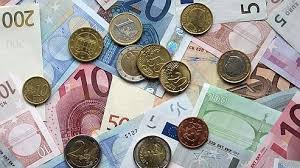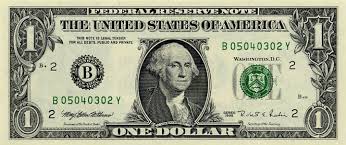Whether or not you were already born when Abba was singing this song, you have probably at least danced to the lyrics:
Money, money, money
Must be funny
In the rich man's world
Money, money, money
Always sunny
In the rich man's world
Aha-ahaaa
All the things I could do
If I had a little money
It's a rich man's world”.
But speaking of money, in Europe we use the euro; in the US we use the dollar: different countries have different names for their currency. Today we’re going to have a short look at both the euro and the dollar, to find out where these names came from.
The euro is quite a young currency: it was launched as a virtual currency on January 1, 1999, before it actually started to circulate as legal tender in twelve Europeans countries (Germany, France, Italy, Spain, Portugal, Belgium, Luxembourg, the Netherlands, Austria, Finland, Greece and Ireland) on January 1, 2002. This meant that the Austrian schilling, the Belgian franc, the Finnish markka, the French franc, the German mark, the Greek drachma, the Italian lira, the Irish punt, the Luxembourg franc, the Netherlands guilder, the Portuguese escudo and the Spanish peseta were all replaced at that time with varying levels of difficulty, by the euro.
So with all these countries speaking quite a few different languages, who decided on the name of the common currency? At first the European Monetary Institute (EMI), established in 1994, had been using the abbreviation ECU for the forthcoming currency, the “European Currency Unit.” An “ecu” is also the name of the gold or silver coins that were used in France starting with the reign of Louis IX in 1266, so that was an easy name for French people to remember when they learned they would be forced to give up their beloved French francs. However, a meeting took place in Madrid in 1995 to officially give the European currency starting date and name the currency, and Germans were promoting the Euromark, French preferred the Eurofranc, English the Europound, and agreement was finally found with the Dutch proposal “Gentleman, what if we used the first four letters.” And thus the euro was officially baptized.
So what about the dollar? The United States is a relatively new country, when compared to Europe. Most of the original European inhabitants fled England, where the official currency was the pound. What was wrong with naming the American currency the American pound for example?
The word “dollar” itself, is much older than the American currency, and is derived from the “thaler”, coins that were first minted back in 1519 from silver, mined in the town of Joachimsthal, which was located in the country then called Bohemia. Spanish pesos and Portuguese eight-real coins (we have all heard of “pieces of eight” from pirate stories,) were also at this time called dollars, as they had a similar weight, appearance, and value. Both of these coins circulated widely in the British North American colonies, because of a shortage in British currency. Wampum beads were also used as currency especially in the north, as was tobacco, or certificates for tobacco in warehouses in Virginia. There was also foreign currency circulating. In 1792, the United States, which had just been independent for a short time, officially chose the dollar, sub-divided into 100 cents, as its official currency.
Dollars are also used as currency in many other different countries now, including Canada, Zimbabwe, Australia, Hong-Kong, Singapore and New Zealand.



Thank you René.
RépondreSupprimer